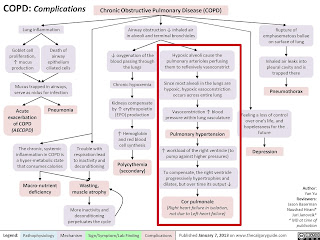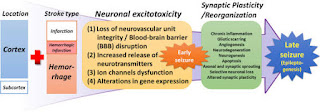BIMONTHLY INTERNAL ASSESSMENT
I) 45 yr old lady who is a housewife and had DM 2 since 5yrs and HTN since 1yr. She was apparently normal 6months back,used to develop pedal edema on and off aggravates on walking and relieves on taking rest for which she was taken to nalgonda hospital and the doctor had advised her to decrease the fluid intake and gave some medications.It was associated with shortness of breath grade 3.
5days back she had developed pedal edema which got progressed and developed abdominal distension,facial puffiness associated with decreased urine output,sob even at rest and chest pain on right side, non radiating with intermittent palpitations.
More here: https://alekyatummala.blogspot.com/2020/09/45-yr-female-with-anasarca.html?m=1
1) What is your complete anatomic and etiologic diagnosis from the data available in the patient's online record linked above? (ignore the provisional diagnosis on admission mentioned in the case report)
ANS :- DIABETIC NEPHROPATHY with NEPHROTIC RANGE PROTEINURIA
2) What are the reasons for her:
Azotemia :- RENAL EXCRETION OF NH4 , UREA IS IMPAIRED DUE TO KIDNEY FAILURE
Anemia :- DECREASED EPO IN CKD
Hypoalbuminemia :- PROTEINURIA
Acidosis :- DUE TO ACCUMULATION OF H+ AND LOSS OF HCO3-
3) What was the rationale for her treatment plan detailed day wise in the record?
Particularly mention rationale and efficacy for some of the drugs administered such as oral and iv bicarbonate? When is iv or oral bicarbonate indicated and why is it contraindicated in certain situations?
ANS :- NAHCO3 for correction of acidosis
POTKLOR syrup for hypokalemia
OROFER-XT for anemia correction
INSULIN AND ANTI HTN MEDICATIONS FOR DM and HTN
LASIX to decrease volume overload
CALCIUM to treat hypocalcemia secondary to CKD
SODIUM BICARBONATE IS INDICATED IN NORMAL ANION GAP METABOLIC ACIDOSIS, aspirin and phenobarbitone overdoses
AND IT IS CONTRAINDICATED IN MANY SITUATIONS DUE TO ASSOCIATED RISK OF HEART FAILURE , Hypernatremia, metabolic alkalosis, seizures, Tetany, sodium retention, peripheral edema.
4) What was the indication for dialysing her and what was the crucial factor that led to the decision to dialyze her on the third day of admission?
ANS :- SEVERE SOB with METABOLIC ACIDOSIS
REFRACTORY ANURIA
5) What are the other factors other than diabetes and hypertension that led to her current condition?
ANS :- primary : Minimal change disease, Focal segmental glomerulosclerosis, Membranous nephropathy.
Secondary : DM, SLE, HIV , Viral hepatitis, malaria, amyloidosis, Sarcoidosis, Drugs : Nsaids, gold, pencillamine Cancer: Hodgkin's and non Hodgkin's, solid tumours of GIT, RCC and lung.
6) What are the expected outcomes in this patient? Compare the outcomes of similar patients globally and share your summary with reference links.
ANS :- PATIENT MAY RECOVER COMPLETELY OR SHE MAY NEED MAINTENANCE HEMODIALYSIS AND KIDNEY TRANSPLANT IN FUTURE DEPENDING ON AGE , GENETIC FACTORS , ASSOCIATED COMORBIDITIES
7) How and when would you evaluate her further for cardio renal HFpEF and what are the mechanisms of HFpEF in diabetic renal failure patients?
ANS :- HYPERACTIVATION OF RAAS IN RESPONSE TO RENAL HYPOXIA RESULTING IN VOLUME OVERLOAD WHICH MAY CONTRIBUTE TO THE DEVELOPMENT OF HFpEF.
8) What are the efficacies over placebo for the available therapeutic options being provided to her for her anemia?
9) What is the utility of tools like the CKD-AQ that assess the frequency, severity, and impact on daily activities of symptoms of anemia of CKD? Is Telugu among the 68 languages in which it is translated?
ANS :- Anaemia contributes to the impairment of health-related quality of life (HRQoL) in patients with CKD. Its impact on patients HRQoL burden is exacerbated by reduced physical capacity and energy levels among these patients.
10) What is the contribution of protein energy malnutrition to her severe hypoalbuminemia? What is the utility of tools such as SGA subjective global assessment in the evaluation of malnutrition in CRF patients?
ANS :- Malnutrition is an important complication in CRF patients and ESRD patients on dialysis.
SGA is a reliable method of assessing nutritional status. Most important is the fact that it can detect the changing trend of nutritional status, which may be missed by one-time anthropometry and biochemical methods.
II) A similar patient data as above with diabetes and renal failure with metabolic acidosis and hypoalbuminemia logged by intern Dr Bhavya here https://bhavyayammanuru.blogspot.com/2020/09/aki-secondary-to-uti.html?m=1
Please comment on the differences in the diagnosis, therapy and outcomes in both these two patients.
ANS :- This 58M had history of fever with cought and elevated tlc with indiacates renal acute kidney injury.As well there is no albuminuria,no edema.
He may not need MHD and his outcome may be better with conservative management
Would you agree with the provisional diagnosis shared for this 58 M in the online case report linked above?
ANS :- YES I AGREE
What are the findings in the ultrasound of both kidneys? How do you explain those findings? Would it explain the etiology for his renal failure?
In this case kidney size is normal and corticomedullary differentiation is present
No RPD changes
So most probably it is AKI



Comments
Post a Comment